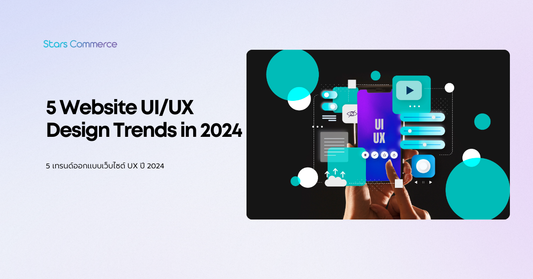Discover the Difference Between Paid Media, Owned Media & Earned Media in Marketing
If you’ve been privy to the digital world you may have heard these buzzwords tossed around, but what is the difference between ‘earned’, ‘owned’ and ‘paid’ media in marketing and what does it mean for your digital strategy?

What is Paid Media?
Paid Media is media used for advertising content in various formats that require expenditure to promote that content on third-party platforms. Examples include Google Ads, Facebook Ads, or banners on other websites.

What is Owned Media?
Owned Media refers to media that we own ourselves. We have full control over the content on those media because of that. Therefore, websites or social media pages are like our own homes that we can organize and manage according to our needs.
What is Earned Media?
Earned Media is media that people share or come from word-of-mouth referrals without us having to spend money or hire them in any way. Examples include word-of-mouth recommendations, social media shares, or being mentioned for reference.

Key Roles of the Paid, Owned & Earned Media
In every content produced, there must be Key Performance Indicators (KPIs) set, which should be based on the communication objectives, such as why the content is created, who the target audience is, and what the brand aims to communicate. As the objectives vary, so do the metrics for measurement.
For example, in creating short video content for Content Marketing to give product usage tips, the objective may be to build awareness and educate through posts on the brand's owned platforms.
Therefore, measuring the outcome might not solely focus on engagement but also on providing customers with comprehensive product information and reducing the steps customers need to inquire about.
Paid Media
Measurement of Paid Media generally revolves around metrics like website traffic, click-through rates, and engagement. Additionally, there are measurements for:
- Lead Generation
- Conversion
- Brand Awareness
- User Engagement
Owned Media
- Lead Generation
- Conversion
- Brand Awareness
- User Engagement
- Traffic Rankings
- Click-Through Rate (CTR) in Email Marketing
- Time on Page (the duration users spend on the website)
Earned Media
- Conversion
- Brand Awareness (Reach)
- User Engagement (Likes, Shares, Comments)
- Lead Generation (Backlinks driving traffic to the website)
Which Media should you focus on?
After understanding the different types of media, it's time to choose which media is most suitable for the content you want to post. The answer lies in the goals you set for your content.
For example, if you want to reach a new target audience or a specific group, you should use Paid Media. However, if you want your content to be seen primarily by your existing followers, you can opt for Owned Media. And if you want to use Earned Media to promote your content, you need to make your content appealing to readers and encourage them to share or talk about it.
Conclusion
Understanding the nuances of Paid Media, Owned Media, and Earned Media is crucial for crafting an effective digital marketing strategy. Each type offers unique advantages and caters to different aspects of audience engagement and brand promotion.
While Paid Media allows for targeted reach, Owned Media provides control and continuity in brand messaging, and Earned Media relies on the organic spread of content through audience engagement.
To truly thrive in the competitive digital world, businesses often find success in leveraging a combination of these media types, tailored to their specific goals and resources. By embracing the diversity of media channels and creatively harnessing their potential, brands can establish meaningful connections with their audiences and achieve lasting success.





